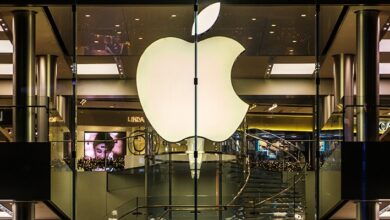Key areas of focus for the new Criteo CEO

By Ronan Shields • January 15, 2025 •

Criteo yesterday announced an end to its months-long search for a new CEO with the unveiling of former Dentsu Americas chief Michael Komasinski.
He takes over the reins from Megan Clarken both as CEO and board member beginning next month in what’s likely to be a pivotal year for both the ad tech company and the broader digital media industry as a whole.
While maintenance of the stock price is the core priority of any publicly listed company’s CEO, Komasinski’s task is a multifaceted one if he is to build on Clarken’s five-year tenure, during which time she took the company on a transformative period.
Clarken assumed the role of CEO in November 2019, a time when its fortunes were at a low as data privacy developments, both in terms of laws and platform updates, concerned investors. However, in the proceeding years, its stock price rose more than 148% – it closed at $37.72 the day prior to the announcement of a new chief executive.
Boardroom politics
Still, that’s not to say it’s been an unfettered joy in the Criteo boardroom in that time, with Digiday sources telling of instances of friction between the directors and the executive leadership, with the new team at the helm of the company facing similarly tumultuous times to the last five years.
Of course, a stock price that’s moving up and to the right will help smooth over any cracks in boardroom relationships and below are key areas of focus if Komasinski’s team is to build upon Clarken’s period in office.
Ride the privacy wave challenging third-party cookies
Criteo’s stock price was in the doldrums in the run-up to Clarken’s appointment as developments such as Apple’s privacy overhaul – such as the rollout of its intelligent tracking prevention in its Safari web browser, etc. – threatened its core retargeted advertising business.
Google followed suit, announcing its plans to degrade third-party cookies in the market-dominant Chome browser in January 2020, caveated with the rollout of its Privacy Sandbox initiative. This meant that Criteo’s stock performance was fundamentally intertwined with how well-versed its team of engineers was with the online web giant’s bid to sustain the ad-funded economy in the privacy-first era.
Of course, a major spanner was thrown in the works when Google (effectively) U-turned on its earlier-stated plans for third-party cookies within Chrome in July, with companies such as Criteo now eagerly awaiting just how Google plans to explain the functionality/benefit of ad tech to its near-3.5 billion users.
According to some, that update will be unveiled early this year, thus making it the first big market development for Komasinski to negotiate.
Retail, retail, retail…
In parallel to the third-party cookie narrative, the early 2020s have been a tale of how Criteo transitioned from ad retargeting to establishing itself as a “commerce media platform”(a.k.a. retail media), a bid to gain greater traction with agency holding groups.
This strategic pivot was marked by key acquisitions, notably the purchase of retail media technology company Mabaya and the acquisition of IPONWEB for $380 million, enhancing Criteo’s capabilities in e-commerce advertising and retail media.
Speaking with Digiday at the time, Nathan Woodman, a former svp at IPONWEB and senior exec at multiple holding group agencies, explained how the latter purchase would give Criteo a full suite of ad tech capabilities in a manner that would appeal to Madison Avenue buyers.
“With its extensive device graph capabilities, Criteo can now look to sell into the agency market more by saying, ‘It doesn’t matter if you use The Trade Desk or Google, we can run a managed service PMP [through a buyer’s contracted demand-side platform], that’s what MediaGrid does.”
Of course, the 800lb. gorilla in the room here is Amazon and its continued charm offensive on Madison Avenue, with the ad industry’s third-largest company using last week’s Consumer Electronics Show to further unveil its plans to win over such scaled media buying teams.
Add to this its Amazon Retail Ads Service, a rollout that many interpreted as a shot across the bow of Criteo’s nascent business unit – the scale of the challenge here is clear. But Komasinski’s background and knowledge of Madison Avenue’s power games could prove a key asset here.
The M&A narrative (both targets and exits)
Midway through Clarken’s tenure as CEO, reports began to emerge that its leadership had appointed Evercore to seek potential exit options – this either was a sign of or led to the aforementioned boardroom tensions.
Some even posited that such a move could lead to serious consolidation in the much-fragmented independent ad tech landscape; then again, sources familiar with internal thinking at the company continued to tell Digiday it continued to weigh up acquisition targets of its own.
In the weeks ahead of Clarken announcing her exit as CEO, it was claimed the company was talking to retail media outfit SKaai, with a ballpark figure of close to half a billion dollars, but Digiday understands such conversations have since gone stale.
However, since then, reports have emerged that one of Criteo’s key partners, Microsoft Advertising, is planning to close its pre-existing retail media arm PromoteIQ after the duo announced a partnership in July 2024. “It’s more of a warm intro, with a nudge that Criteo will have access to Microsoft Advertising demand,” noted one source speaking with Digiday at the time.
However, given the whirlwind of change that’s currently engulfing the industry, some wonder if the sale of Criteo to Microsoft could be the denouement of Criteo’s time on the public markets and Microsoft’s own resurgent ambitions in adland.
https://digiday.com/?p=565562


